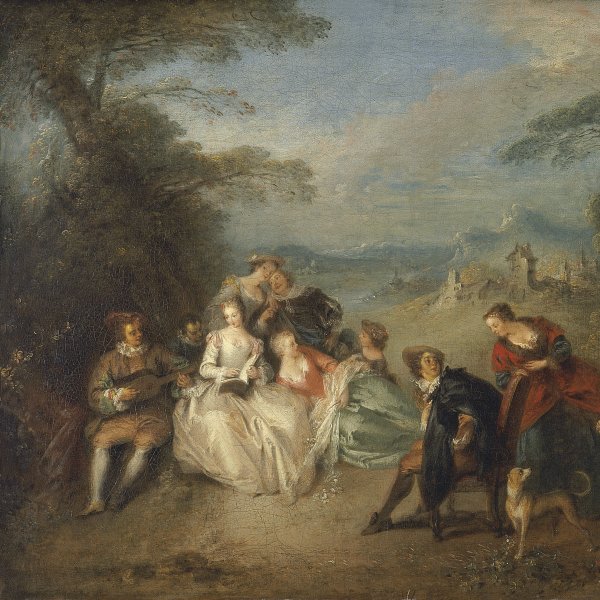Jean-Baptiste Pater
Valenciennes, 1695-Paris, 1736
Jean-Baptiste Pater began his training in Valenciennes with the painter Jean- Baptiste Guidé and with his father, the sculptor Antoine Pater. He moved to Paris around 1710, probably following Watteau, a fellow citizen of Valenciennes. Pater became a pupil of Watteau in Paris but the latter’s difficult temperament led him to abandon his studies after a short time. Around 1715 or 1716 Pater returned to his native city where he tried to work outside of the framework of the guild of Saint Luke, of which he was never a member. The constant legal problems that arose as a result encouraged him to return to Paris in 1718. Over the following years he must have maintained contacts with Watteau as he worked for some of his clients.
Pater completed Watteau’s unfinished commissions after his death and was involved in Jean de Jullienne’s project to reproduce all the artist’s oeuvre in the form of prints. In 1728 he was admitted to the Académie Royale as a painter of fêtes galantes. At this period his work reveals the marked influence of Flemish painting while on occasions he borrowed compositions, settings and clothing directly from Watteau’s work, which he imbued with the characteristic animation and joviality of Flemish scenes of social gatherings. Among Pater’s best works are Soldiers celebrating (Musée du Louvre, Paris), Conversation galante (Wallace Collection, London), and Italian Players in the Park (Royal collection, London). In 1736 Pater was commissioned to paint a Tiger Hunt (Musée Picardie, Amiens) for the royal apartments in Versailles. Despite his success, Pater lived in a constant state of economic difficulty and was obliged to produce large numbers paintings of subjects that were easy to sell such as women bathing, series of the Seasons and dances.
Pater completed Watteau’s unfinished commissions after his death and was involved in Jean de Jullienne’s project to reproduce all the artist’s oeuvre in the form of prints. In 1728 he was admitted to the Académie Royale as a painter of fêtes galantes. At this period his work reveals the marked influence of Flemish painting while on occasions he borrowed compositions, settings and clothing directly from Watteau’s work, which he imbued with the characteristic animation and joviality of Flemish scenes of social gatherings. Among Pater’s best works are Soldiers celebrating (Musée du Louvre, Paris), Conversation galante (Wallace Collection, London), and Italian Players in the Park (Royal collection, London). In 1736 Pater was commissioned to paint a Tiger Hunt (Musée Picardie, Amiens) for the royal apartments in Versailles. Despite his success, Pater lived in a constant state of economic difficulty and was obliged to produce large numbers paintings of subjects that were easy to sell such as women bathing, series of the Seasons and dances.




